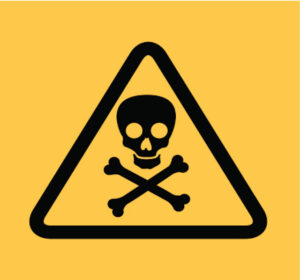
Today’s article deals with the guidelines and requirements concerning the selection and the safe operation of weighing equipment within high-risk explosion-risk environments.
Today’s article deals with the guidelines and requirements concerning the selection and the safe operation of weighing equipment within high-risk explosion-risk environments. It is aimed at production managers, project engineers, plant engineers, health and safety officers, manufacturing companies’ purchasers, and system integrators and machine builders in the pharmaceutical, chemical, food, and construction material industries. This article will give you informative information on the current guidelines, with a heavy focus on ATEX and the primary parameters required to simplify the selection of components to be used. Read on to learn about weighing in hazardous areas!
Background and History Information
As an essential element of industrial safety technology, explosion protection stops the ignition of flammable materials in explosive spaces by electrical equipment, which prevents damage to people and operating systems as far as possible.
Variety of Different Regulations
Around the globe, there is a vast range of national standards manufacturers have to handle while offering technologies for use in hazardous spaces. Therefore, products sold in different countries will have various certifications for otherareas at the risk of explosion. Apart from regional approvals, four standards provide international acceptance. Some focuses are ATEX, Atmosphere Explosible; International Electrotechnical Commission, or IEC; Canadian Standards Association (CSA); and Factory Mutual Research Corporation (FM).
ATEX Directive
ATEX consists of two EU directives describes as which equipment and work environment are allowed in an environment with an explosive atmosphere. The ATEX Product Directive describes rules for the design and development of products used within hazardous areas and is designed to protect people who work in specific areas. Through conformity assessment procedures, the manufacturer of these products must demonstrate compliance with the requirements and the suitability for use within explosion-risk spots.
Setup and Operation of the Electrical Equipment in Hazardous Spots
Safety within hazardous areas must be ensured by all involved parties, like installers, manufacturers, authorities, operators, and service providers. The health and safety officer is entirely responsible for the plant’s safety and has to judge the risks of explosion and organize the zoning by IEC 60079-14 or the national regulations. You then must ensure that the system is installed and checked correctly before equipment commissioning through regular maintenance and audit. The installer must observe the installation requirements and pick the electrical equipment correctly.
CONTACT THE SCALE PEOPLE FOR WEIGHING EQUIPMENT AND CALIBRATION SERVICES!
Since 1956, The Scale People have earned a reputation as the best service provider for calibrating and repairing weighing equipment in the mid-Atlantic area. Our sales team can help you to find the best weighing equipment for your application. We currently have offices in Columbia, MD, and Newport News, VA, but we offer our services nationwide. Over the years, we have built many satisfied clients from various industries, including pharmaceutical, food and beverage, and government manufacturing. We are a fully ISO/IEC 17025:2017 accredited service company offering calibration for balances, scales, dynamometers, force measurements, test weights, pipettes, and more. All our services have a 100% satisfaction guarantee. We’re only a phone call away at +1 (800) 451-9593. Follow us on Facebook, Twitter, and LinkedIn to learn more about our work.
